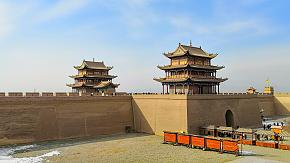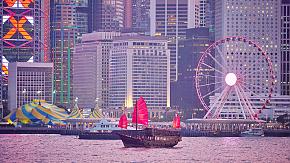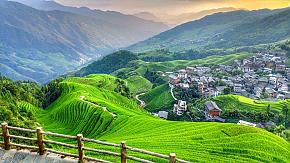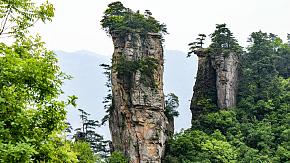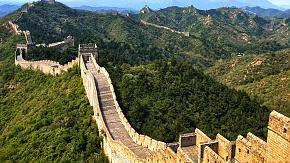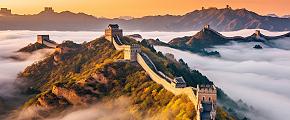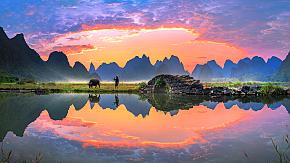Which Part of the Great Wall of China Is Best to Visit
There are so many sections of the Great Wall in China. Jinshanling or Mutianyu, Badaling or Simatai... Which is the best section of the Great Wall to visit? You may have this kind of question when planning your China tour. Here is a comparison of the most popular Great Wall sections to help you quickly decide which one is better to visit depending on hiking intensity and time needed for you or your family.
Differences Between the Sections of the Great Wall in Beijing
The Great Wall of China around Beijing is composed of the main 8 sections, including Badaling, Mutianyu, Jinshanling, Simatai, Jiankou, Huanghuacheng, Gubeikou, and Juyongguan. Each section offers its own unique features and historical significance.
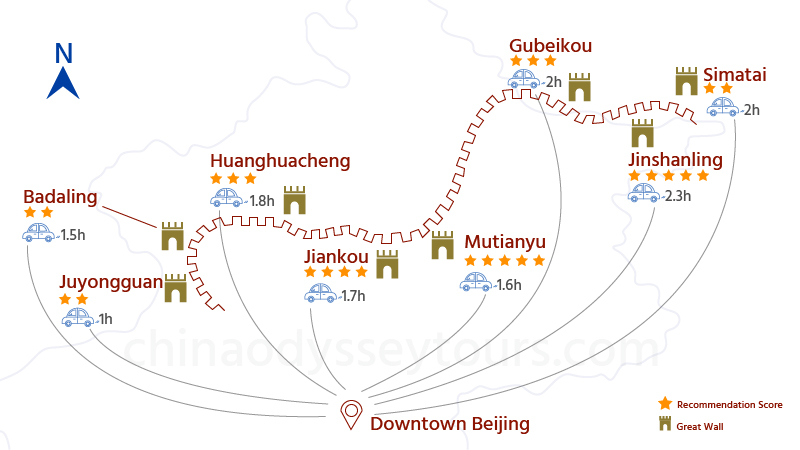 Map of the Great Wall Near Beijing
Map of the Great Wall Near Beijing
| Section Name | Distance | Hiking Difficulty | Crowd | Cable Car | Recommend Score |
| Badaling |
68km (90min Drive) |
Easy | Crowded | √ | ★★ |
| Mutianyu |
70km (95min Drive) |
Easy | Moderate | √ | ★★★★★ |
| Simatai |
138km (120min Drive) |
Difficult | Quiet | √ | ★★★ |
| Jiankou |
73km (100min Drive) |
Difficult | Quiet | - | ★★★★ |
| Jinshanling |
161km (140min Drive) |
Moderate | Moderate | √ | ★★★★★ |
| Gubeikou |
148km (130min Drive) |
Moderate | Quiet | - | ★★★ |
| Juyongguan |
55km (60min Drive) |
Easy | Crowded | √ | ★★ |
| Huanghuacheng |
82km (110min Drive) |
Moderate | Moderate | - | ★★★ |
Best Parts of the Great Wall to Visit in Beijing
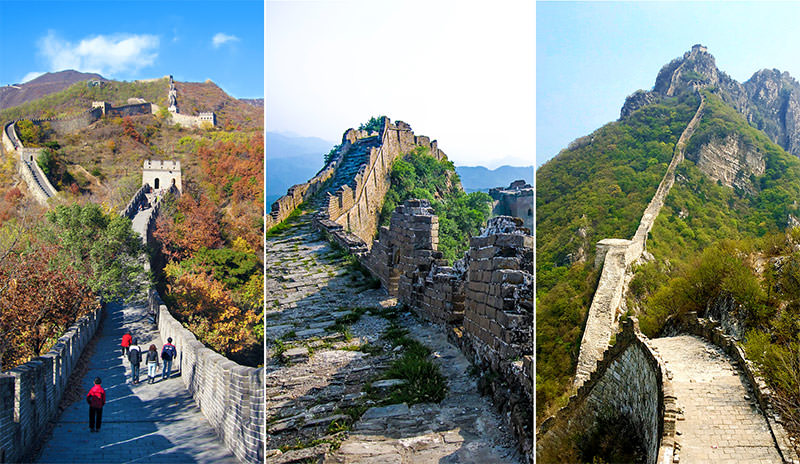 Mutianyu (Right), Jinshanling (Middle), Jiankou (Left) - Best Sections of Great Wall Near Beijing
Mutianyu (Right), Jinshanling (Middle), Jiankou (Left) - Best Sections of Great Wall Near Beijing
The sections of the Great Wall near Beijing cater to different interests, whether you're traveling with family, seeking a scenic hike, or yearning for an adventurous trek. Here's our list of the most recommended parts of the Great Wall to visit when you're traveling to Beijing:
Mutianyu Great Wall - Best Section to Visit With Kids
 Mutianyu Great Wall
Mutianyu Great Wall
The breathtaking alpine beauty that surrounds the Mutianyu Great Wall will be the perfect setting for your visit, especially when you are traveling with kids.
It is far safer for small children to visit this stretch of the Great Wall than sections that have not been renovated. The paths are level and feature guardrails. Not to mention that Mutianyu is usually less crowded. Your children will have more room to run around and play, and you won't have to stress out as much about them getting lost.
To save your small ones' legs for exploration, Mutianyu offers a cable car up and down. In addition, the exciting toboggan descent from the wall is sure to be a hit with children.
Recommended Tours:
Jinshanling Great Wall - Most Beautiful Section & Suitable for Everyone
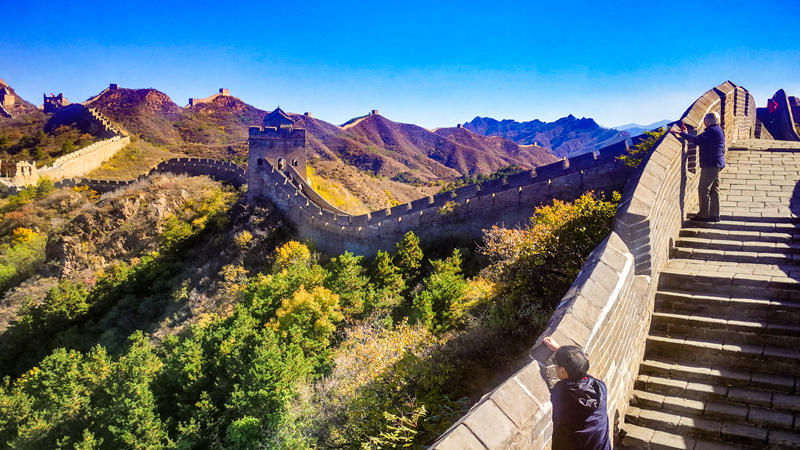 Jinshanling Great Wall
Jinshanling Great Wall
Jinshanling is a hidden gem compared to other Great Wall sections like Badaling. This translates to far fewer tourists, allowing you to truly appreciate the wall's landscape and history without feeling rushed or jostled by crowds.
It offers an immersive experience that seamlessly blends history, adventure, and breathtaking scenery, making it a must-visit destination for photography enthusiasts and avid hikers alike.
One thing to mention, Jinsanling Great Wall is unique for its mix of restored and unrestored areas. The restored parts provide a safe and easy path to explore, while the unrestored sections give you a glimpse of the wall's original state and a more adventurous feel. You can either take a cable car to explore the restored side or challenge yourself by hiking through the unrestored side connected to the Simatai Great Wall.
Recommended Tour:
Jiankou Great Wall - Best Section for Hiking
 Jiankou Great Wall
Jiankou Great Wall
Jiankou is a "wild" section, offering a glimpse of the wall's original state. If you're an adventurer seeking a challenge and an off-the-beaten-path experience, the Jiankou Great Wall is the best section for you to explore.
Jiankou's rugged terrain has steep climbs and sharp drops. It's not for the faint of heart, but for those who can handle it, the reward is an unparalleled adventure.
While Jiankou promises a unique and thrilling journey, safety remains paramount. This section is not recommended for anyone with mobility issues or a fear of heights. Always be sure to go with an experienced guide familiar with the terrain.
Sections to Visit Beyond Beijing Great Wall
While the most popular sections of the Great Wall are located around Beijing, we would like to recommend another two sections in China. The experience and landscape they offer are like no other Great Wall sections.
Jiayuguan (Jiayu Pass) - the Great Wall in Desert
Jiayuguan holds the distinction of being the westernmost point of the Great Wall, located in Gansu Province. Unlike the lush greenery surrounding the Great Wall near Beijing, Jiayuguan stands out for its dramatic desert backdrop. A visit here offers a unique perspective on the Wall's role in Chinese history and trade.
Besides, Jiayuguan isn't just a wall; it's a complex that includes a well-preserved fortress and watchtowers. The nearby Wei-Jin tombs, which boast exquisite ancient murals, are also worth visiting to get a glimpse into the artistic traditions of the region.
Shanhaiguan (Shanhai Pass) - Starting Point of the Great Wall
Shanhaiguan Great Wall, sitting in Qinhuangdao, Hebei Province, holds the prestigious title of "First Pass Under Heaven". It was built to guard the narrow passage between mountains and sea and said to be the start point of the Great Wall of China.
Shanhaiguan stands out as the only section of the Great Wall situated alongside the sea, offering a rare opportunity to behold the ancient wall as it winds its way from the coastline.
Let Us Take You to Your Favorite Part of The Great Wall
Intact or ruined, kids-friendly or adventurous... The Great Wall always has something to offer. By comparing the information, you probably already have the best part of the Great Wall in mind. For a hassle-free trip to China with Great Wall that most matches your interest, please feel free to send an inquiry or reach us via trip@odynovotours.com
What Our Clients Say
"Great Customized Service", "Trip of A Lifetime", "Exceed All Expectations"

